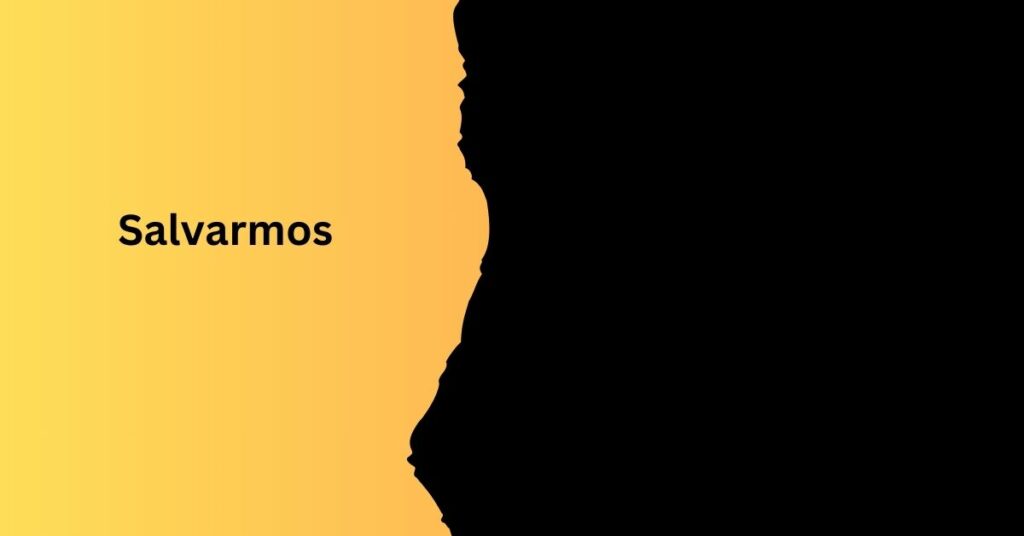Salvarmos || Everything You Need To Know

In the realm of art and conservation, there exists a dynamic synergy that not only captivates the imagination but also serves as a powerful catalyst for environmental awareness and action.
This fusion of creative expression and ecological advocacy finds its embodiment in the concept of “Salvarmos,” a term derived from the Portuguese word “salvar,” meaning “to save.”
Salvarmos encapsulates the idea of leveraging artistic endeavors to protect and preserve our planet’s biodiversity and natural resources.
The Concept of Salvarmos:
Salvarmos derives from the Portuguese word “salvar,” meaning “to save.” It encapsulates the idea of utilizing artistic endeavors to protect and preserve the planet’s biodiversity and natural resources. The concept emphasizes the intersection of art and conservation as a means of raising awareness and inspiring action.
Art as a Medium for Environmental Awareness:
Throughout history, art has been used to explore humanity’s relationship with the natural world. From ancient cave paintings to contemporary installations, artists have depicted environmental themes. Salvarmos highlights the role of art in conveying messages of ecological urgency through various mediums such as visual art, music, performance, and multimedia installations.
Interdisciplinary Collaboration:
Salvarmos fosters partnerships between artists, conservationists, and scientists. This collaboration enriches the creative process by integrating scientific insights with artistic expression. Scientists contribute knowledge about ecological issues, while artists offer fresh perspectives and imaginative interpretations, leading to innovative approaches to conservation.
Global Momentum of the Salvarmos Movement:
In recent years, the Salvarmos movement has gained momentum worldwide. Initiatives such as public murals, exhibitions, and collaborative projects between artists and environmental organizations proliferate globally. These initiatives raise awareness about environmental challenges and inspire collective action on a global scale.
Tangible Conservation Outcomes:
Salvarmos goes beyond aesthetic appreciation to produce tangible conservation outcomes. Many initiatives allocate proceeds from art sales or performances to fund conservation projects.
By directly supporting on-the-ground conservation efforts, Salvarmos contributes to the protection of endangered habitats, restoration of ecosystems, and support for wildlife conservation initiatives.
Community Engagement and Empowerment:
Salvarmos engages local communities in conservation initiatives, fostering a sense of ownership and stewardship over natural resources. Through community art projects, educational workshops, and cultural festivals, Salvarmos promotes a deeper connection between people and the environment, empowering communities to take action to safeguard the planet for future generations.
Historical Roots of Artistic Activism:
This heading delves into the historical precedents of using art as a tool for activism and conservation. It would explore examples from different time periods and cultures where artists have leveraged their creative talents to advocate for social and environmental causes.
For instance, it might discuss the role of art in movements such as the Hudson River School in the United States, which depicted the beauty of the American landscape to promote conservation efforts in the 19th century.
Additionally, it could examine how artists like John James Audubon used their work to raise awareness about the plight of endangered species. By tracing the historical roots of artistic activism, this section highlights the long-standing tradition of using art as a catalyst for change.
Innovative Approaches in Salvarmos Projects:
This section explores the diverse and innovative approaches employed in Salvarmos projects to address environmental challenges. It would showcase examples of projects that push the boundaries of traditional artistic mediums and techniques to engage audiences in conservation efforts.
For instance, it might feature immersive installations that simulate the experience of climate change or interactive exhibits that encourage viewer participation.
By highlighting these innovative approaches, this section underscores the creative potential of Salvarmos in sparking meaningful dialogue and inspiring action.
Impact Measurement and Evaluation in Salvarmos Initiatives:
Here, the focus is on the methods used to measure and evaluate the impact of Salvarmos initiatives. It would delve into the various metrics and indicators used to assess the effectiveness of artistic interventions in achieving conservation goals.
This might include quantitative measures such as funds raised or hectares of land protected, as well as qualitative assessments of changes in public attitudes and behaviors.
By examining impact measurement and evaluation techniques, this section provides insight into how Salvarmos initiatives track their progress and adjust their strategies to maximize their effectiveness.
Cultural Diversity and Environmental Narratives in Salvarmos:
This section explores the intersection of cultural diversity and environmental narratives within the Salvarmos movement. It examines how different cultural perspectives influence artistic expressions and conservation practices.
For example, it might discuss how indigenous artists incorporate traditional ecological knowledge into their work or how artists from diverse backgrounds draw on their cultural heritage to convey messages of environmental stewardship.
By highlighting the richness of cultural diversity within Salvarmos, this section emphasizes the importance of inclusivity and representation in shaping environmental narratives.
Technology and Digital Art in the Salvarmos Movement:
Here, the focus is on the role of technology and digital art in advancing the goals of Salvarmos. It would explore how digital platforms and tools are used to amplify conservation messages and reach broader audiences.
This might include examples of virtual reality experiences that transport viewers to threatened ecosystems or social media campaigns that harness the power of online communities to mobilize support for environmental causes.
By examining the intersection of technology and art within Salvarmos, this section highlights the potential for digital innovation to enhance the impact of conservation efforts.
Education and Outreach Strategies in Salvarmos Initiatives:
This section examines the education and outreach strategies employed in Salvarmos initiatives to raise awareness and inspire action. It would explore a range of approaches, including school programs, workshops, and public campaigns designed to engage diverse audiences in environmental issues.
For example, it might discuss how art-based workshops are used to teach children about the importance of biodiversity or how public art installations spark conversations about sustainability within local communities.
By highlighting effective education and outreach strategies, this section demonstrates how Salvarmos initiatives foster environmental literacy and empower individuals to make positive change.
Conclusion
In conclusion, Salvarmos represents a symbiotic relationship between art and conservation, harnessing the transformative power of creativity to inspire environmental stewardship.
As we confront the unprecedented challenges of climate change, habitat loss, and species extinction, the Salvarmos movement offers a beacon of hope, reminding us that through collective action and creative expression, we can forge a more sustainable and harmonious relationship with the natural world.
In embracing Salvarmos, we not only celebrate the beauty of our planet but also commit to preserving its precious biodiversity for generations to come.








